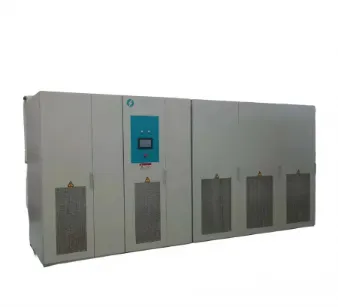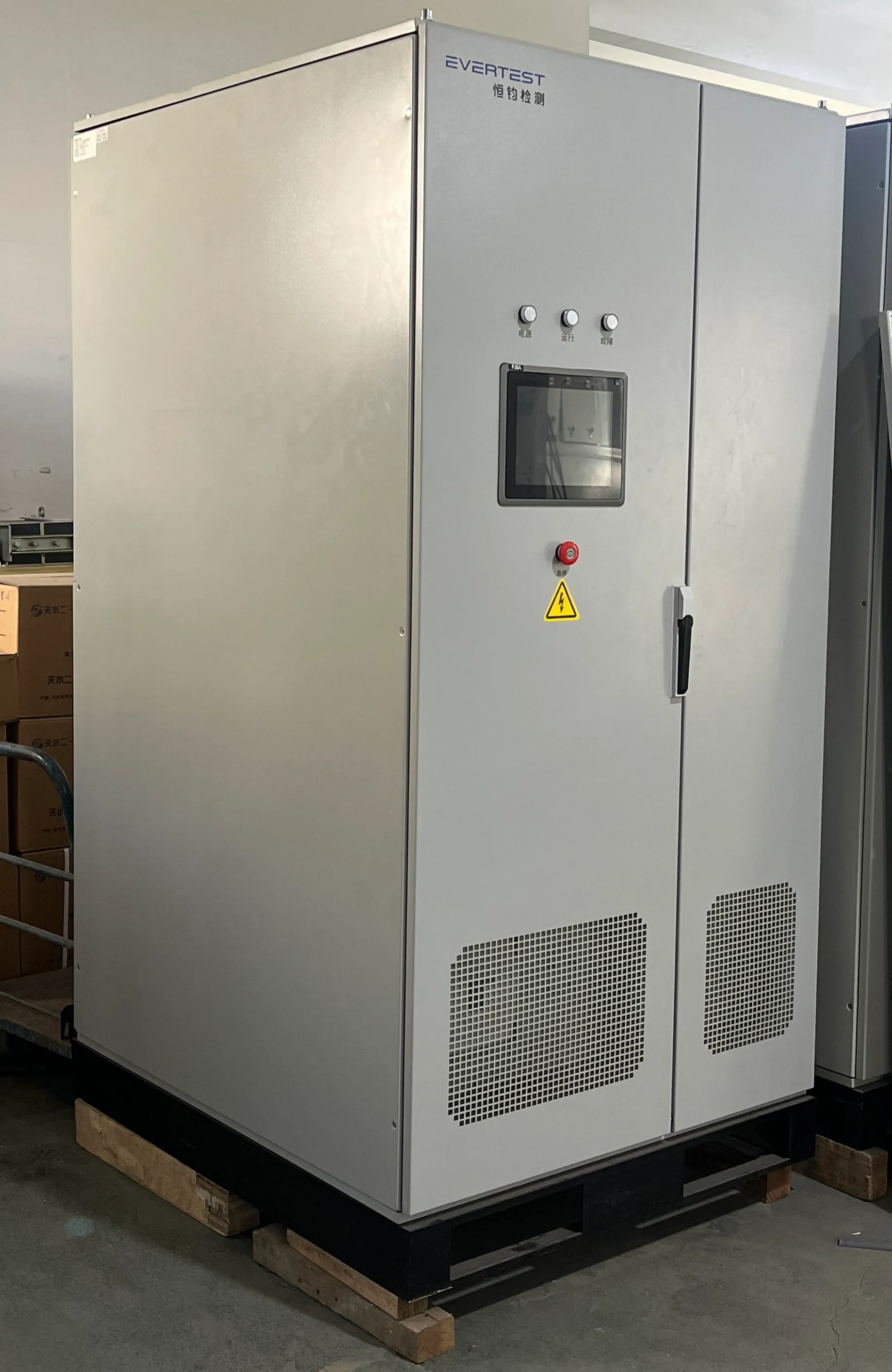การเลือกแหล่งจ่ายไฟที่สอดคล้องกับความต้องการในยุคปัจจุบัน
คุณภาพของกระแสไฟฟ้าไม่ใช่แค่เรื่องสำคัญในอุตสาหกรรมเท่านั้น แต่ยังเป็นปัจจัยสำคัญในทั้งภาคที่อยู่อาศัยและภาคธุรกิจ ไม่ว่าจะเป็นการจ่ายไฟให้กับเครื่องมือทางการแพทย์ที่ไวต่อแรงดันไฟฟ้า เครื่องจักรขนาดใหญ่ในโรงงาน หรืออุปกรณ์อิเล็กทรอนิกส์อัจฉริยะภายในบ้าน ความมั่นคงของแรงดันไฟฟ้ายังคงเป็นสิ่งจำเป็น การเปลี่ยนแปลงหรือลดลงของแรงดันไฟฟ้าแบบฉับพลันไม่เพียงแต่รบกวนการใช้งานในชีวิตประจำวัน แต่ยังอาจนำไปสู่ความเสียหายที่มีค่าใช้จ่ายสูง ข้อผิดพลาดของระบบ หรือแม้กระทั่งความเสียหายถาวรต่ออุปกรณ์
A แหล่งจ่ายไฟเสถียรภาพแรงดัน ได้กลายเป็นส่วนหนึ่งของโครงสร้างพื้นฐานที่จำเป็นในพื้นที่ที่ต้องพึ่งพาไฟฟ้าในปัจจุบัน ด้วยจำนวนอุปกรณ์ที่เชื่อมต่อกับระบบไฟฟ้าเพิ่มมากขึ้นและการซับซ้อนของอุปกรณ์อิเล็กทรอนิกส์สมัยใหม่ การมีไฟฟ้าที่จ่ายอย่างสม่ำเสมอ แหล่งจ่ายไฟฟ้า จึงไม่ใช่ทางเลือกอีกต่อไป การเลือกแหล่งจ่ายไฟแบบปรับแรงดันให้คงที่ (Voltage Stabilizing Power Supply) ที่เหมาะสม จำเป็นต้องประเมินความต้องการด้านพลังงาน สภาพแวดล้อม และคุณสมบัติด้านความปลอดภัยอย่างรอบคอบ การเลือกที่ถูกต้องจะช่วยประหยัดค่าใช้จ่ายในระยะยาว เพิ่มอายุการใช้งานอุปกรณ์ และสร้างความมั่นใจได้ในทุกการใช้งาน
เข้าใจการทำงานของแหล่งจ่ายไฟแบบปรับแรงดันให้คงที่
ทำงานอย่างไรและทำไมจึงสำคัญ
แหล่งจ่ายไฟแบบปรับแรงดันให้คงที่ได้รับการออกแบบมาเพื่อตรวจจับ ปรับ และแก้ไขระดับแรงดันขาเข้าให้คงที่ เมื่อแรงดันลดลงต่ำกว่าหรือเพิ่มสูงกว่าช่วงที่ยอมรับได้ ตัวอุปกรณ์จะเพิ่มหรือลดแรงดันโดยใช้ส่วนประกอบภายใน เช่น หม้อแปลงไฟฟ้า (transformers) ตัวควบคุมแรงดัน (regulators) และตัวกรอง (filters) ผลลัพธ์ที่ได้คือไฟฟ้าที่สะอาดและเชื่อถือได้สำหรับอุปกรณ์ทุกเครื่องที่เชื่อมต่ออยู่
ทำไมเรื่องนี้ถึงสำคัญ? ความแปรปรวนของแรงดันไฟฟ้าสามารถทำให้เกิดการทำงานที่ไม่สม่ำเสมอในอุปกรณ์อิเล็กทรอนิกส์ การสูญเสียข้อมูลในระบบดิจิทัล การทำงานที่ร้อนเกินไปของมอเตอร์ และในบางกรณีอาจทำให้อุปกรณ์เสียหายทั้งหมด ด้วยการทำหน้าที่เป็นสะพานเชื่อมระหว่างแหล่งจ่ายไฟที่ไม่เสถียรกับโหลดที่สำคัญ แหล่งจ่ายไฟที่มีระบบปรับแรงดันให้คงที่จะช่วยให้ทุกอย่างทำงานได้อย่างราบรื่นและปลอดภัย
แรงดันไฟฟ้าแปรปรวนมาจากที่ใด
ความไม่เสถียรของแรงดันไฟฟ้าสามารถเกิดขึ้นได้จากหลายสาเหตุ ในพื้นที่ห่างไกลหรือชนบท สายส่งไฟฟ้ายาวและโหลดที่เปลี่ยนแปลงตลอดเวลา ทำให้เกิดแรงดันไฟฟ้าตกบ่อยครั้ง ในเขตเมือง หม้อแปลงไฟฟ้าที่รับภาระมากเกินไป หรือปัญหาโครงสร้างพื้นฐาน สามารถทำให้เกิดแรงดันไฟฟ้ากระชากและแรงดันตก นอกจากนี้ยังมีลักษณะแปรปรวนของระบบพลังงานหมุนเวียน และการเปลี่ยนแหล่งจ่ายไฟหลักไปยังแหล่งสำรองอย่างบ่อยครั้ง ยิ่งทำให้เห็นความจำเป็นในการใช้แหล่งจ่ายไฟที่มีระบบปรับแรงดันให้คงที่อย่างชัดเจนยิ่งขึ้น
อุปกรณ์นี้ช่วยป้องกันการรบกวนทั้งเล็กน้อยและรุนแรง ทำให้เป็นองค์ประกอบสำคัญของระบบพลังงานในปัจจุบัน ไม่ว่าจะเป็นสถานที่ติดตั้งหรือกรณีการใช้งาน ประโยชน์พื้นฐานที่ได้รับนั้นเหมือนกันนั่นคือ ความน่าเชื่อถือ

การประเมินความต้องการโหลดไฟฟ้าของคุณ
การคำนวณประมาณการโหลดที่เชื่อมต่อทั้งหมด
ก่อนซื้อแหล่งจ่ายไฟแบบปรับแรงดันให้คงที่ สิ่งสำคัญที่สุดขั้นตอนหนึ่งคือการกำหนดโหลดไฟฟ้าทั้งหมดของคุณ ซึ่งรวมถึงอุปกรณ์ทั้งหมดที่จะเชื่อมต่อกับระบบ ไม่ว่าจะเป็นเครื่องใช้ไฟฟ้าหนึ่งชิ้น หรือเครือข่ายไฟฟ้าของอาคารทั้งหลัง โดยทั่วไป โหลดทั้งหมดจะถูกคำนวณในหน่วยกิโลโวลต์แอมแปร์ (kVA) หรือวัตต์
สิ่งสำคัญคือการเลือกแหล่งจ่ายไฟแบบปรับแรงดันให้คงที่ที่มีกำลังมากกว่าโหลดที่คุณคำนวณไว้เล็กน้อย กำลังสำรองนี้จะทำให้อุปกรณ์ไม่ต้องทำงานที่กำลังสูงสุดตลอดเวลา ซึ่งอาจทำให้อายุการใช้งานลดลงหรือประสิทธิภาพลดลง การวางแผนไว้ล่วงหน้าที่ 15–25% ของกำลังเพิ่มเติม มักแนะนำให้ใช้เพื่อประสิทธิภาพและความปลอดภัยในระยะยาว
การแยกความแตกต่างระหว่างโหลดที่ไวต่อแรงดันและโหลดที่ไม่ไวต่อแรงดัน
อุปกรณ์ทุกชนิดไม่ได้มีความเปราะบางเท่ากันเมื่อเกิดปัญหาแรงดัน เครื่องคอมพิวเตอร์ เซิร์ฟเวอร์ อุปกรณ์ห้องปฏิบัติการ และอุปกรณ์ทางการแพทย์บางชนิด มีความไวต่อการเปลี่ยนแปลงของแรงดันไฟฟ้าเป็นพิเศษ ในขณะที่อุปกรณ์อื่นๆ เช่น ระบบแสงสว่าง หรือระบบให้ความร้อน อาจสามารถทนต่อการเปลี่ยนแปลงเล็กน้อยของแรงดันได้
เมื่อเลือกแหล่งจ่ายไฟที่มีแรงดันเสถียร ควรพิจารณาแยกอุปกรณ์ที่สำคัญออกจากโหลดที่ไม่ไวต่อแรงดัน คุณอาจเลือกใช้หน่วยจ่ายไฟเฉพาะสำหรับอุปกรณ์ที่มีความเสี่ยงสูงที่สุด ในขณะที่ต่อกิริงจริตทั่วไปเข้ากับระบบรวมศูนย์ การป้องกันแบบเจาะจงนี้จะช่วยให้คุณไม่ลงทุนมากเกินไป แต่ยังคงความปลอดภัยและความมีประสิทธิภาพไว้ได้
การประเมินสภาพแรงดันไฟฟ้าในพื้นที่ของคุณ
การวิเคราะห์รูปแบบคุณภาพไฟฟ้าในท้องถิ่น
ไม่ใช่ทุกพื้นที่ที่ประสบปัญหาความไม่เสถียรของแรงดันไฟฟ้าในระดับเดียวกัน บางพื้นที่มีปัญหาแรงดันต่ำเกิดขึ้นบ่อยครั้งเนื่องจากโครงสร้างพื้นฐานมีภาระหนัก ในขณะที่พื้นที่อื่นอาจพบปัญหาแรงดันไฟฟ้ากระชากสูงจากข้อผิดพลาดของหม้อแปลงหรือการเปลี่ยนสถานะในโรงงานอุตสาหกรรม การทำความเข้าใจพฤติกรรมเฉพาะท้องถิ่นของระบบไฟฟ้าสามารถช่วยให้เลือกแหล่งจ่ายไฟที่มีคุณสมบัติปรับเสถียรแรงดันได้อย่างเหมาะสม
การปรึกษาช่างไฟฟ้าในพื้นที่ หรือตรวจสอบระบบไฟฟ้าโดยใช้เครื่องบันทึกค่าแรงดันสามารถช่วยระบุปัญหาที่เกิดซ้ำได้ ข้อมูลเหล่านี้จะช่วยให้คุณเลือกอุปกรณ์ที่ออกแบบมาเพื่อตอบสนองปัญหาความผิดปกติของแรงดันไฟฟ้าที่มักจะเกิดขึ้นในพื้นที่นั้นๆ ได้อย่างมีประสิทธิภาพ
คำนึงถึงสภาพแวดล้อม
ความชื้น อุณหภูมิ ฝุ่น และข้อจำกัดของพื้นที่ใช้งานก็มีผลต่อการเลือกด้วย คุณจะติดตั้งแหล่งจ่ายไฟที่มีคุณสมบัติปรับเสถียรแรงดันไว้ภายนอกอาคาร ในชั้นใต้ดิน หรือภายในโรงงานที่มีความร้อนสูงหรือไม่ อุปกรณ์แต่ละรุ่นมาพร้อมกับตัวเครื่องและเกรดฉนวนที่แตกต่างกัน เพื่อรองรับสภาพแวดล้อมเหล่านี้
หน่วยจ่ายไฟที่มีคุณภาพอุตสาหกรรมเพื่อปรับเสถียรภาพแรงดันไฟฟ้า อาจต้องการการป้องกันสภาพอากาศ การระบายความร้อนด้วยลมบังคับ หรือแม้แต่ระบบระบายความร้อนด้วยน้ำ หน่วยสำหรับใช้ในบ้านหรือสำนักงานมักให้ความสำคัญกับขนาดกะทัดรัดและการทำงานที่มีเสียงรบกวนต่ำ ทำให้เหมาะสำหรับการใช้งานในอาคาร
เลือกหน่วยจ่ายไฟที่ปรับเสถียรภาพแรงดันไฟฟ้าให้เหมาะสมกับประเภทที่ใช้งาน
เปรียบเทียบประเภทเซอร์โว เรเลย์ และแบบสถิต
หน่วยจ่ายไฟที่ปรับเสถียรภาพแรงดันไฟฟ้า มีการออกแบบทางเทคโนโลยีที่แตกต่างกัน แต่ละแบบเหมาะกับการใช้งานเฉพาะทาง ประเภทที่พบบ่อยที่สุด ได้แก่
แบบเรเลย์: ใช้เรเลย์แม่เหล็กไฟฟ้าในการเปลี่ยนเกียร์ตัวแปลงตามแรงดันไฟฟ้าขาเข้า มีต้นทุนประหยัดและเหมาะกับโหลดขนาดเล็ก แต่มีความเร็วในการตอบสนองช้ากว่า
แบบมอเตอร์เซอร์โว: ใช้มอเตอร์เซอร์โวในการปรับขดลวดตัวแปลงเพื่อแก้ไขแรงดันไฟฟ้าอย่างแม่นยำ เหมาะสำหรับโหลดขนาดกลางถึงใหญ่ที่ต้องการความแม่นยำสูง
แบบสถิต: ใช้อิเล็กทรอนิกส์แบบสเตตัสโซลิดโดยไม่มีชิ้นส่วนเคลื่อนไหว ให้ความเร็วในการตอบสนองสูงและความแม่นยำสูง โดยทั่วไปใช้ในระบบอุตสาหกรรมและระบบทางการแพทย์ระดับสูง
การเลือกใช้งานขึ้นอยู่กับงบประมาณ ลักษณะการเปลี่ยนแปลงของแรงดันไฟฟ้า และความไวของอุปกรณ์ แต่ละเทคโนโลยีมีข้อดีข้อเสียที่ต้องแลกเปลี่ยยกันในเรื่องความเร็ว ต้นทุน ความทนทาน และระดับเสียงรบกวน
พิจารณาช่วงแรงดันขาเข้าและค่าความคลาดเคลื่อนขาออก
ช่วงแรงดันขาเข้าที่แหล่งจ่ายไฟแบบปรับแรงดันเสถียรรับได้ยิ่งกว้าง ยิ่งแสดงถึงความสามารถในการรับมือกับสภาพแวดล้อมที่รุนแรงได้ดีขึ้น อย่างไรก็ตาม ช่วงที่กว้างขึ้นโดยทั่วไปหมายถึงต้นทุนที่สูงขึ้นและระบบภายในที่ซับซ้อนมากขึ้น
นอกจากนี้ ค่าความคลาดเคลื่อนของแรงดันขาออกควรมีช่วงแคบ—โดยทั่วไปอยู่ที่ ±1% ถึง ±2%—สำหรับอุปกรณ์ที่ต้องการความแม่นยำสูง ส่วนเครื่องใช้ไฟฟ้าทั่วไปในบ้านหรือระบบแสงสว่าง ค่าความคลาดเคลื่อนที่ยอมรับได้อาจอยู่ที่ ±5% ก็ได้ ควรตรวจสอบข้อมูลจำเพาะด้านแรงดันของอุปกรณ์ที่ต่อพ่วงเสมอ เพื่อให้แน่ใจว่ามีความเข้ากันได้
ตรวจสอบคุณสมบัติหลักและเกณฑ์ประสิทธิภาพ
การป้องกันไฟกระชากและความสามารถในการกรองสัญญาณรบกวน
นอกเหนือจากการควบคุมแรงดันไฟฟ้าให้คงที่ ระบบจ่ายไฟที่ควบคุมแรงดันไฟฟ้าในปัจจุบันยังมีคุณสมบัติป้องกันแรงดันไฟฟ้ากระชากและกรองสัญญาณรบกวนแม่เหล็กไฟฟ้า (EMI) อีกด้วย คุณสมบัติเหล่านี้ช่วยลดผลกระทบจากแรงดันไฟฟ้าชั่วขณะที่เกิดจากฟ้าผ่า เครื่องจักรในโรงงาน หรือวงจรไฟฟ้าที่เปิด-ปิด
อุปกรณ์ที่มีตัวกรองในตัวช่วยปกป้องอุปกรณ์ที่เชื่อมต่อจากสัญญาณรบกวนและแรงดันไฟฟ้าชั่วขณะที่อาจทำให้เกิดการทำงานผิดพลาด หน้าจอลาย หรือการสูญเสียข้อมูล โดยเฉพาะในสภาพแวดล้อมที่เต็มไปด้วยระบบสื่อสารอิเล็กทรอนิกส์ คุณสมบัตินี้มีความสำคัญอย่างยิ่ง
เวลาตอบสนองและความเร็วในการปรับแรงดัน
หนึ่งปัจจัยที่มักถูกมองข้ามคือเวลาในการปรับแรงดันของอุปกรณ์ ซึ่งหมายถึงความเร็วในการตรวจจับและตอบสนองต่อการเปลี่ยนแปลงของแรงดันไฟฟ้า เวลาในการปรับแรงดันที่รวดเร็ว (โดยทั่วไปน้อยกว่า 20 มิลลิวินาที) มีความสำคัญอย่างมากสำหรับโหลดที่ไวต่อแรงดันไฟฟ้า เช่น คอมพิวเตอร์ หรืออุปกรณ์ทางการแพทย์
โมเดลที่ช้าลงอาจเพียงพอสำหรับระบบไฟฟ้าหรืออุปกรณ์ให้ความร้อน ควรตรวจสอบให้แน่ใจว่าความเร็วของแหล่งจ่ายไฟแบบปรับแรงดันให้คงที่ตรงกับความต้องการของอุปกรณ์ของคุณ ผู้ผลิตมักระบุค่าความเร็วไว้ในหน่วยมิลลิวินาที ดังนั้นควรเปรียบเทียบระหว่างรุ่นต่างๆ
วางแผนสำหรับความสามารถในการขยายระบบและขยายตัวในอนาคต
เหลือพื้นที่สำหรับการเติบโต
ความต้องการพลังงานเปลี่ยนแปลงไปตามเวลา ไม่ว่าคุณจะเพิ่มเครื่องใช้ไฟฟ้าใหม่ในบ้านหรือขยายโรงงานในอนาคต การเลือกแหล่งจ่ายไฟแบบปรับแรงดันให้คงที่ที่มีกำลังสูงกว่าเล็กน้อยสามารถช่วยประหยัดค่าใช้จ่ายและปัญหาในภายหลังได้
การซื้ออุปกรณ์ที่ใหญ่กว่าเล็กน้อยในตอนนี้มักจะประหยัดกว่าการเปลี่ยนใหม่ทั้งหมดภายในไม่กี่ปี ธุรกิจได้รับประโยชน์เป็นพิเศษจากอุปกรณ์ที่พร้อมสำหรับอนาคต ซึ่งสามารถรองรับการขยายตัวของกิจการหรืออุปกรณ์เพิ่มเติมในอนาคตได้
การผสานการทำงานกับระบบสำรองและระบบพลังงานหมุนเวียน
ผู้ใช้จำนวนมากขึ้นกำลังผสานรวมเครื่องกำเนิดไฟฟ้า อินเวอร์เตอร์พลังงานแสงอาทิตย์ และระบบกักเก็บแบตเตอรี่เข้ากับโครงข่ายไฟฟ้าของตน แหล่งจ่ายไฟฟ้าควบคุมแรงดันไฟฟ้าบางรุ่นอาจไม่รองรับระบบเหล่านี้ โปรดตรวจสอบให้แน่ใจว่าเครื่องรองรับแหล่งจ่ายไฟหลายแหล่งและสามารถรองรับกระแสไฟฟ้าแบบสองทิศทางได้หากจำเป็น
ในการติดตั้งระบบพลังงานทดแทน โดยเฉพาะระบบพลังงานแสงอาทิตย์ มักพบว่าแรงดันไฟฟ้ามีการเปลี่ยนแปลงอยู่เสมอ อุปกรณ์ปับปัญญาจ่ายไฟที่มีเสถียรภาพของแรงดันไฟฟ้า (Voltage Stabilizing Power Supply) ที่ออกแบบมาเพื่อรับอินพุตแบบผสมผสาน จะช่วยให้แรงดันไฟฟ้าขาออกมีความเสถียร แม้ในกรณีที่การผลิตไฟฟ้าไม่คงที่ หรือขณะที่มีการเปลี่ยนแหล่งจ่ายไฟระหว่างระบบกริดและแหล่งพลังงานอื่นๆ
การันตีความน่าเชื่อถือและการใช้งานที่ปลอดภัยในระยะยาว
ใบรับรองและมาตรฐานคุณภาพ
ควรเลือกอุปกรณ์ปับปัญญาจ่ายไฟที่มีเสถียรภาพของแรงดันไฟฟ้า (Voltage Stabilizing Power Supply) ที่เป็นไปตามมาตรฐานคุณภาพและความปลอดภัยระดับนานาชาติ เช่น มาตรฐาน CE, ISO, UL หรือ BIS มาตรฐานเหล่านี้แสดงให้เห็นว่าอุปกรณ์ผ่านการทดสอบอย่างเข้มงวด และเป็นไปตามข้อกำหนดด้านความปลอดภัยทางไฟฟ้า
การปฏิบัติตามข้อกำหนดยังช่วยให้กระบวนการเรียกร้องการรับประกันหรือการขอความคุ้มครองจากประกันภัยในกรณีที่เกิดความเสียหายทางไฟฟ้าเป็นไปอย่างง่ายดายมากยิ่งขึ้น ในบางเขตอำนาจ ระบบซึ่งได้รับการรับรองอาจเป็นสิ่งที่จำเป็นสำหรับการใช้งานเชิงพาณิชย์หรือภายในอาคารสาธารณะ
ข้อกำหนดด้านการบำรุงรักษาและความสามารถในการให้บริการ
แม้ว่าแบบจำลองของแหล่งจ่ายไฟแบบเสถียรภาพแรงดันไฟฟ้า (Voltage Stabilizing Power Supply) หลายรุ่นจะไม่ต้องบำรุงรักษา แต่บางรุ่นจำเป็นต้องมีการตรวจสอบเป็นระยะ โดยเฉพาะในสภาพแวดล้อมที่เลวร้าย ควรเลือกแบบจำลองที่มีแผงบริการเข้าถึงได้ ไฟแสดงสถานะ หรือฟังก์ชันการตรวจสอบจากระยะไกล เพื่อให้การบำรุงรักษาต่อเนื่องเป็นไปอย่างง่ายดาย
ผู้ผลิตที่ให้บริการอะไหล่ สนับสนุนทางเทคนิค และให้บริการลูกค้าที่รวดเร็ว จะช่วยเพิ่มมูลค่าเพิ่มเติม แผนการสนับสนุนระยะยาวมีความสำคัญไม่แพ้ตัวผลิตภัณฑ์เอง โดยเฉพาะสำหรับการติดตั้งที่มีความสำคัญสูง
คำถามที่พบบ่อย
ฉันจะสามารถกำหนดขนาดของแหล่งจ่ายไฟแบบเสถียรภาพแรงดันไฟฟ้า (Voltage Stabilizing Power Supply) ที่เหมาะสมกับอุปกรณ์ของฉันได้อย่างไร
ขั้นแรก คำนวณกำลังไฟฟ้ารวม (หน่วยวัตต์หรือกิโลวัตต์แอมแปร์) ของอุปกรณ์ที่ต่อกันทั้งหมด จากนั้นเพิ่มสำรองอีก 15–25% เพื่อรับมือกับกระแสไฟฟ้ากระชากในขณะสตาร์ทและเพื่ออนาคตที่อาจขยายเพิ่มเติม เลือกหน่วยที่มีกำลังสูงกว่าโหลดรวมเล็กน้อย
ฉันสามารถใช้แหล่งจ่ายไฟแบบปรับแรงดันเสถียรร่วมกับเครื่องใช้หลายเครื่องได้หรือไม่
ได้ ตราบเท่าที่โหลดรวมไม่เกินกำลังที่หน่วยกำหนดไว้ คุณสามารถปกป้องระบบโดยรวมหรือแยกเฉพาะอุปกรณ์ที่ไวต่อความผันผวนของไฟฟ้าก็ได้ ขึ้นอยู่กับความต้องการและรุ่นที่มีอยู่
หน่วยปรับแรงดันเสถียรทุกรุ่นสามารถใช้ร่วมกับเครื่องปั่นไฟหรือระบบพลังงานแสงอาทิตย์ได้หรือไม่
ไม่ใช่ทุกรุ่นที่เข้ากันได้โดยอัตโนมัติ ตรวจสอบว่าหน่วยรองรับประเภทอินพุตที่เปลี่ยนแปลงได้หรือไม่ และสามารถควบคุมไฟฟ้าจากทั้งระบบสายส่งและแหล่งพลังงานหมุนเวียนหรือไม่ หน่วยบางรุ่นออกแบบมาเพื่อการผนวกรวมแบบไฮบริดโดยเฉพาะ
สารบัญ
- การเลือกแหล่งจ่ายไฟที่สอดคล้องกับความต้องการในยุคปัจจุบัน
- เข้าใจการทำงานของแหล่งจ่ายไฟแบบปรับแรงดันให้คงที่
- การประเมินความต้องการโหลดไฟฟ้าของคุณ
- การประเมินสภาพแรงดันไฟฟ้าในพื้นที่ของคุณ
- เลือกหน่วยจ่ายไฟที่ปรับเสถียรภาพแรงดันไฟฟ้าให้เหมาะสมกับประเภทที่ใช้งาน
- ตรวจสอบคุณสมบัติหลักและเกณฑ์ประสิทธิภาพ
- วางแผนสำหรับความสามารถในการขยายระบบและขยายตัวในอนาคต
- การันตีความน่าเชื่อถือและการใช้งานที่ปลอดภัยในระยะยาว
-
คำถามที่พบบ่อย
- ฉันจะสามารถกำหนดขนาดของแหล่งจ่ายไฟแบบเสถียรภาพแรงดันไฟฟ้า (Voltage Stabilizing Power Supply) ที่เหมาะสมกับอุปกรณ์ของฉันได้อย่างไร
- ฉันสามารถใช้แหล่งจ่ายไฟแบบปรับแรงดันเสถียรร่วมกับเครื่องใช้หลายเครื่องได้หรือไม่
- หน่วยปรับแรงดันเสถียรทุกรุ่นสามารถใช้ร่วมกับเครื่องปั่นไฟหรือระบบพลังงานแสงอาทิตย์ได้หรือไม่



